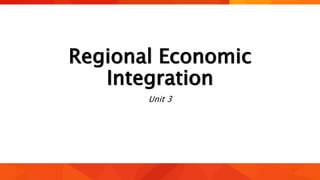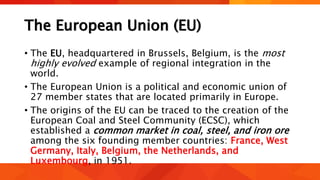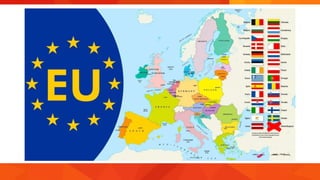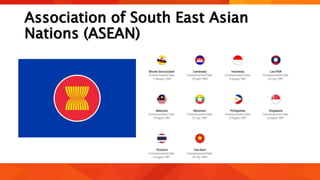This document provides an overview of regional economic integration. It defines regional integration as economic and political steps taken by member states to increase competitiveness through preferential trade access and regional production networks. The stages of integration are described, moving from free trade areas to customs unions to common markets and eventual political union. Benefits include larger markets and economies of scale, while costs include loss of sovereignty and job losses in protected industries. Different types of regional blocs are characterized based on their proximity to world markets and size of local markets. The European Union is presented as the most advanced integration bloc, originating from the European Coal and Steel Community.














































